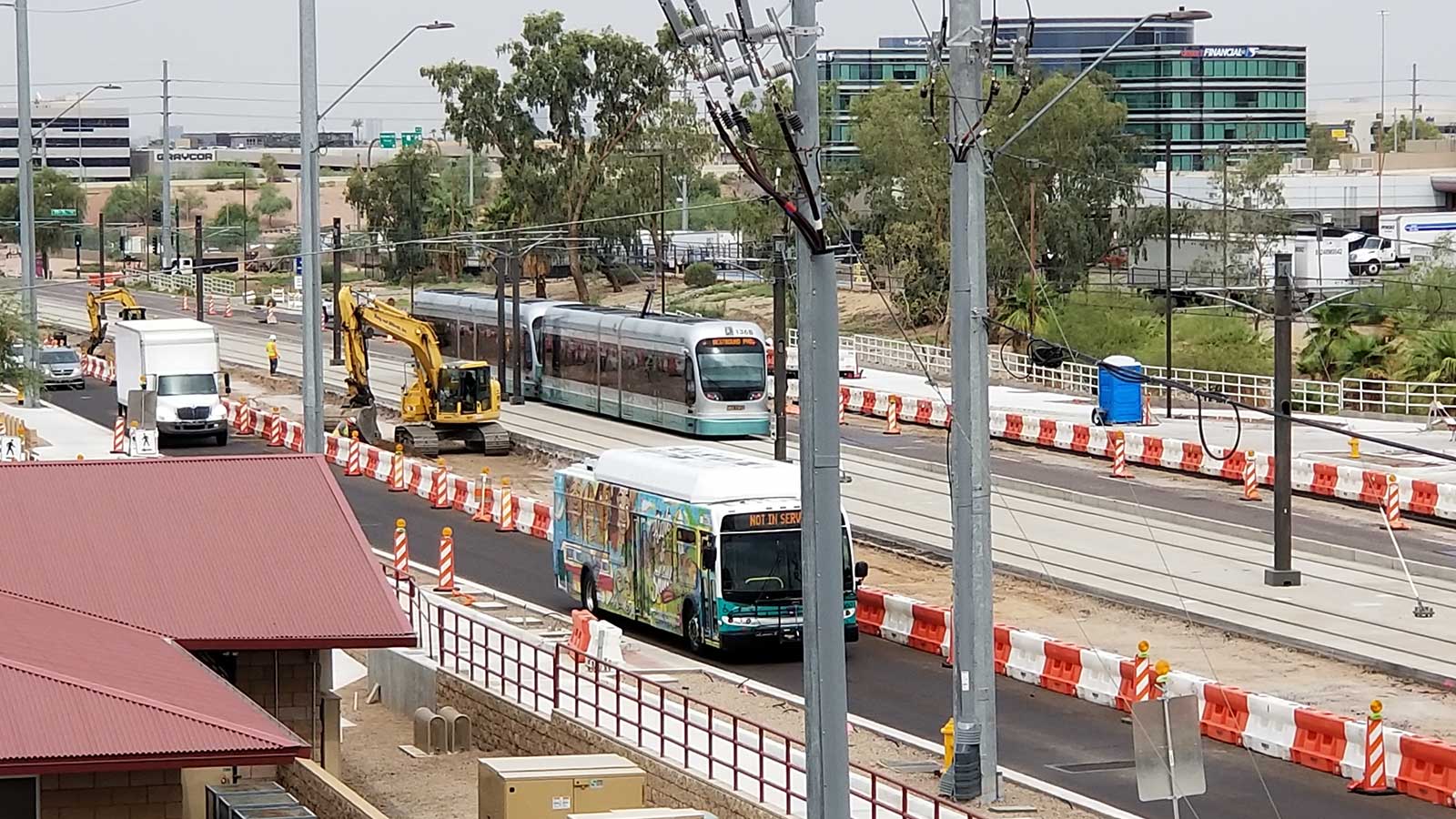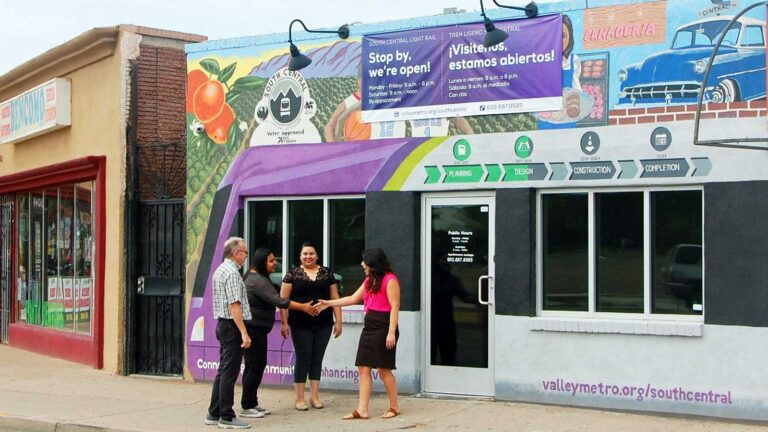By Roland Murphy for Arizona Builder’s Exchange
Last week the City of Phoenix released its second “Transportation 2050 Progress Report,” covering July 1, 2017-June 30, 2018.
“The voter-approved T2050 plan continues to improve transportation in Phoenix through a continually improving transit system and new paving projects on our city’s busiest arterial streets,” said Mayor Thelda Williams, introducing the report. “The horizon for Phoenix’s transportation future is bright with new light rail projects ready to start, new asphalt smoothing the drive on even more busy streets, and our bus system advancing to fill in the grid.”
In 2015, Phoenix voters approved Proposition 104 to create a 0.4-0.7 percent sales tax increase to help fund the T2050 plan for improved street and transit service. The sales tax will generate roughly have of the plan’s overall funds, the rest of which will come from a combination of federal, regional and other local sources.
High Capacity Transit Update
According to the report summary, “Phoenix’s T2050 plan includes a $1B investment planned for FY 2018-2023 in improving the city’s high capacity transit network, including developing bus rapid transit, and light rail improvements and expansion. In addition to revenues generated by the city’s sales tax, T2050’s other funding sources includes federal and state grants, the Public Transportation Fund, fares, advertising, and other local funds.”
The cumulative high capacity transit progress to date — covering Jan. 1, 2016-June 30, 2018 — lists several highlights.
Among these are:
- Accelerated completion of the controversial South Central Corridor by more than 10 years;
- Advancing preliminary engineering plans; awarding a project designer contract; and finalizing a funding, design and construction agreement for the Northwest Phase II Extension;
- Implementing a traffic planning analysis and commencing an environmental assessment for the Capitol/I-10 West Extension;
- Starting preliminary planning and evaluation efforts for the Northeast Corridor;
- Beginning construction on the 50th Street Station, and
- Starting preliminary planning for the West Phoenix Extension.
Targeted goals for Fiscal Year 2019 include:
- South Central extension final design;
- Northwest Phase II extension final design and pre-construction;
- Capitol/I-10 West Phase I extension environmental study and initial design;
- Conduct feasibility study for proposed Northeast Corridor extension, and
- Open 50th Street station in early 2019.
Street Maintenance & Improvements
“The Street Transportation Department has about $183M from T2050 dedicated to Phoenix streets construction and maintenance projects over the next five years,” the report states. “In addition to T2050, the department relies on funding from the state-collected motor fuel taxes, city’s general fund, federal funds and impact fees.”
Highlights of progress made since the beginning of 2016 include:
- 90 miles of new pavement and 121 miles of pavement treatments on streets designated as arterial/major collectors;
- 89 new or expanded streets planned;
- 87 road and bridge projects scheduled for completion;
- 119 miles of new bike lanes installed;
- 861 new streetlights installed, and
- 15 miles of new sidewalks developed.
Street pavement and overlay projects completed over the past Fiscal Year include:
- Multi-year pavement maintenance program approved through FY2022;
- 45 miles of new asphalt pavement on major streets; 51.5 miles of other pavement treatments;
- Nearly 59 miles of local streets paved;
- 166 miles of other pavement treatments applied to local streets
Projects targeted for FY 2019 include:
- Pave at least 19 miles on major streets;
- Install more than 30 miles of bicycle lanes;
- Construct nearly 4 miles of new sidewalks;
- Complete planning activities for mobility projects at seven locations, and schedule 12 locations for completion
- New roads and upgraded bridges: Complete three neighborhood pedestrian and mobility studies for major streets, design 21 new or expanded street projects, and schedule 46 projects for completion.
Regarding the degree of achievement under the program to date, Aviation and Transportation Chair, Councilwoman Deb Stark, said, “Phoenix is only two and a half years into the 35-year T2050 plan with undeniable improvements to our city’s transit system and our roads beginning to see improvements. As we continue to improve transportation in Phoenix, our residents, and all those who visit our city, will benefit from the vision our voters had when they approved this plan.”
The complete report is available for download here.


